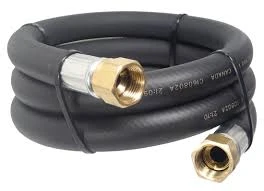335345435
des . 03, 2024 13:02 Back to list
low temperature hose
Understanding Low Temperature Hose A Comprehensive Guide
In various industrial applications, efficient fluid transfer under challenging conditions is crucial. One essential component in ensuring this efficiency is the low temperature hose. These specially designed hoses are engineered to withstand low-temperature environments and enable the safe and effective transport of gases and liquids. In this article, we will explore what low temperature hoses are, their applications, materials used, and critical considerations for selection and maintenance.
What is a Low Temperature Hose?
A low temperature hose is a flexible tube designed specifically to operate at temperatures significantly below freezing, typically ranging from -40°F (-40°C) to -100°F (-73°C) or even lower. These hoses are constructed from materials that maintain flexibility, durability, and strength even in extreme cold, allowing them to handle various fluids without becoming brittle or breaking.
Applications of Low Temperature Hoses
Low temperature hoses are prevalent across multiple industries. Some of the most common applications include
1. Cryogenics Industries dealing with liquid gases such as nitrogen, oxygen, and argon utilize low temperature hoses due to their ability to handle extreme temperature variations. 2. Food and Beverage In food processing, where temperatures can drop significantly during storage or transportation, these hoses ensure that product quality is maintained. 3. Chemical Processing Low temperature hoses are employed for the safe transfer of chemicals that require refrigeration or have low boiling points.
4. Oil and Gas These hoses are essential for fluid transfer in remote or cold locations, ensuring operational efficiency in extreme conditions.
5. Refrigeration Systems In HVAC applications, low temperature hoses are crucial for the circulation of refrigerants and working fluids.
Materials Used in Low Temperature Hoses
The effectiveness of low temperature hoses largely depends on the materials used in their construction. Common materials include
- EPDM (Ethylene Propylene Diene Monomer) Known for its excellent resilience and performance in cold environments
. EPDM hoses can withstand temperatures down to -40°F.- PVC (Polyvinyl Chloride) Flexible and resistant to low temperatures, PVC hoses are often used in less demanding applications.
- Silicone Highly flexible and capable of enduring low and high temperatures, silicone hoses are ideal for applications requiring extreme flexibility.
- Polyurethane This material provides high abrasion resistance and is suitable for extended use in harsh environments.
Each material has its own strengths and weaknesses, making careful consideration crucial when selecting the most appropriate type for specific use cases.
low temperature hose

Considerations for Selecting Low Temperature Hoses
When choosing a low temperature hose, several factors must be taken into account
1. Temperature Range Determine the minimum and maximum temperatures that the hose will encounter in its specific application.
2. Chemical Compatibility Ensure that the hose material is compatible with the fluids being transported. Some materials can degrade when in contact with certain chemicals.
3. Pressure Ratings Consider the pressure requirements of the application, as different hoses have varying pressure ratings.
4. Flexibility and Bend Radius In applications where hoses must bend around corners, understanding the bend radius is vital; a hose that is too rigid may not function effectively.
5. Length and Diameter Ensure the hose length and diameter are appropriate for the intended application to prevent flow restrictions and allow ease of use.
Maintenance of Low Temperature Hoses
Proper maintenance can prolong the lifespan of low temperature hoses. Here are some tips
- Regular Inspections Look for signs of wear, such as cracks, bulges, or soft spots. Any visible damage should be addressed immediately.
- Cleaning Maintain cleanliness by regularly flushing the hose to remove any contaminants that could affect performance.
- Storage Store hoses in a temperature-controlled environment to prevent degradation from temperature fluctuations.
- Pressure Testing Periodically conduct pressure tests to ensure that the hose is functioning within its safe limits.
Conclusion
Low temperature hoses are a vital component in many industries, providing reliable performance in extreme conditions. Understanding their applications, materials, and maintenance requirements is essential for ensuring safety and efficiency in any operation. By selecting the right hose for your needs and adhering to best maintenance practices, you can enhance the reliability and longevity of your fluid transfer systems.
-
SAE 100 R17 Black Smooth Cover Hydraulic Hose
NewsMar.07,2025
-
SAE 100 R17 Black Smooth Cover Hydraulic Hose
NewsMar.07,2025
-
SAE 100 R17 Black Smooth Cover Hydraulic Hose
NewsMar.07,2025
-
SAE 100 R17 Black Smooth Cover Hydraulic Hose
NewsMar.07,2025
-
SAE 100 R17 Black Smooth Cover Hydraulic Hose
NewsMar.07,2025
-
steel wire braided hydraulic hose
NewsMar.07,2025



